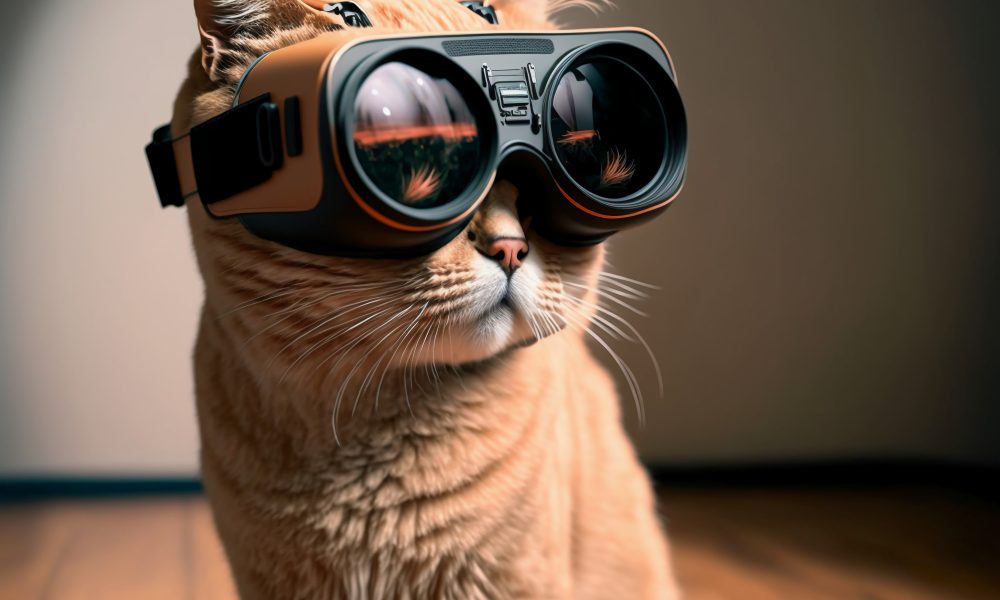Introducing Dr. Evelyn Montgomery
Greetings, history enthusiasts and animal lovers alike! Dr. Evelyn Montgomery here, your guide through the fascinating and often peculiar world of Cold War espionage. Today, we delve into a tale so strange it might just make you meow with disbelief: the CIA’s “Acoustic Kitty” program.
From Whiskers to Wires: The Birth of Acoustic Kitty
The Cold War era was a period of intense rivalry between the United States and the Soviet Union. As tensions escalated, intelligence agencies on both sides scrambled to develop ingenious methods for gathering intel. The CIA, in particular, was known for its innovative (and sometimes downright outlandish) approaches to covert operations. One such project, codenamed “Acoustic Kitty,” stands out as a prime example of thinking outside the box – or perhaps, the litter box – in the quest for clandestine information.
The brainchild of the CIA’s Office of Scientific Intelligence (OSI), Acoustic Kitty aimed to exploit a seemingly innocuous creature – the common house cat – for espionage purposes. The idea was deceptively simple: equip a feline with a miniature microphone transmitter, allowing it to surreptitiously eavesdrop on conversations within Soviet embassies or government buildings. Cats, with their natural curiosity and ability to navigate tight spaces unnoticed, were seen as the perfect furry spies.

Operation Meow: Training a Cat for Espionage
The challenges of transforming a cat into a covert agent, however, were anything but simple. According to declassified documents obtained through the Freedom of Information Act [1], the OSI experimented with various breeds, eventually settling on Siamese and shorthaired cats for their agility and trainability. The CIA partnered with veterinarians and animal behaviorists to develop a specialized training program. This involved implanting a tiny radio transmitter, roughly the size of a large grain of rice, beneath the cat’s skin. An external antenna, disguised as part of a modified collar, would then pick up the transmitted audio signals.
The real hurdle, however, lay in conditioning the cats to behave like, well, spies. Researchers attempted to train the felines to approach designated listening posts near Soviet buildings, lured by the promise of food or treats. The idea was that the cats would then activate the recording device by brushing up against a hidden trigger mechanism. However, as anyone who has ever owned a cat knows, their independent spirit and unpredictable nature can make them notoriously difficult to train. The cats, it turned out, were far more interested in napping in sunbeams or chasing after errant butterflies than carrying out clandestine missions.
Technical Purr-blems: The Challenges of Kitty Spying
The technological limitations of the era further complicated the Acoustic Kitty project. Miniaturized microphones in the 1960s were bulky and had limited battery life. This meant the implanted device would only be able to record for a short duration, significantly hindering its effectiveness for sustained eavesdropping. Additionally, the antenna collars were prone to malfunctioning, and the delicate surgical procedures to implant the transmitters carried inherent risks to the feline subjects.
A Feline Fiasco: The Short and Furry Career of Acoustic Kitty
Despite these challenges, the CIA persisted with the Acoustic Kitty program for several years. There are rumors of a single successful mission where a feline operative infiltrated a Soviet compound and managed to transmit a brief snippet of conversation. However, the details surrounding this alleged operation remain classified.
Ultimately, the Acoustic Kitty project was deemed a failure. The technical hurdles, combined with the inherent difficulties of training and controlling cats for espionage purposes, proved insurmountable. The program was officially terminated in the late 1960s, leaving behind a legacy of ingenuity, absurdity, and a cautionary tale about the limitations of unconventional spy tactics.
Beyond the Litter Box: The Legacy of Acoustic Kitty
While Acoustic Kitty may not have revolutionized the world of espionage, its story serves as a fascinating reminder of the lengths to which intelligence agencies were willing to go during the Cold War. It highlights the constant push for innovation, even if it veers into the realm of the bizarre. The project also raises ethical questions about the use of animals in intelligence gathering, particularly when it involves potential risks to their health and well-being.
Claws vs. Covert Ops: Was it Worth the Scratch?
The legacy of Acoustic Kitty remains a subject debates continue regarding the cost-effectiveness and ethical implications of the Acoustic Kitty program. While some argue that the project was a waste of resources, yielding minimal returns for a significant financial investment, others see it as a stepping stone in the development of miniaturized recording devices and animal training techniques that would later be applied in other espionage endeavors.
A

Legacy of Innovation: Kitty Spies Pave the Way
Though the Acoustic Kitty itself never became a purr-fect spy, the project did contribute to advancements in several key areas. The miniaturization of radio transmitters continued to progress, leading to the development of smaller and more sophisticated listening devices used in later covert operations. The research conducted on animal behavior and training methods also proved valuable, with some techniques adapted for applications such as search and rescue missions or military bomb detection.
Ethical Whispers: The Price of Espionage
The use of animals in intelligence gathering, however, remains a contentious issue. Critics of the Acoustic Kitty program argue that subjecting cats to surgery, potential discomfort from the implanted devices, and the stress of unpredictable situations raises serious ethical concerns. Animal rights activists point out that the program prioritized the potential benefits of espionage over the welfare of the feline participants.
The Verdict: A Meow-ment in Espionage History
The Acoustic Kitty program undoubtedly holds a unique place in the annals of Cold War espionage. It stands as a testament to the audacious spirit of innovation that often characterized intelligence gathering during this period. While ultimately unsuccessful, the project serves as a reminder of the constant push for technological advancements and the pursuit of unconventional methods to gain an edge over adversaries. The ethical considerations surrounding animal use, however, remain a valid concern, prompting ongoing discussions about the boundaries of acceptable practices in the shadowy world of espionage.
Conclusion: A Tail of Espionage Innovation (and Absurdity)
The tale of Acoustic Kitty is a captivating blend of historical intrigue, scientific ingenuity, and a healthy dose of absurdity. It reminds us that the quest for intelligence can sometimes lead down unexpected paths, with results that are as entertaining as they are thought-provoking. Whether viewed as a testament to human creativity or a cautionary fable about the limits of unconventional tactics, the Acoustic Kitty program undoubtedly left its paw print on the landscape of Cold War espionage.












